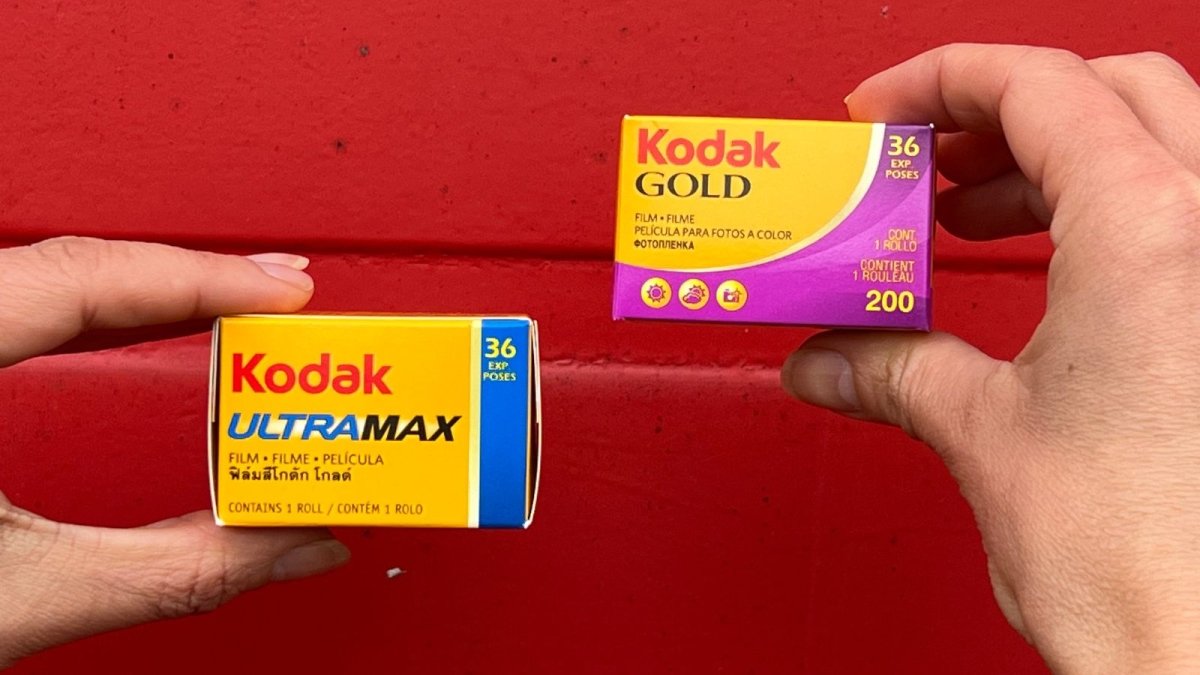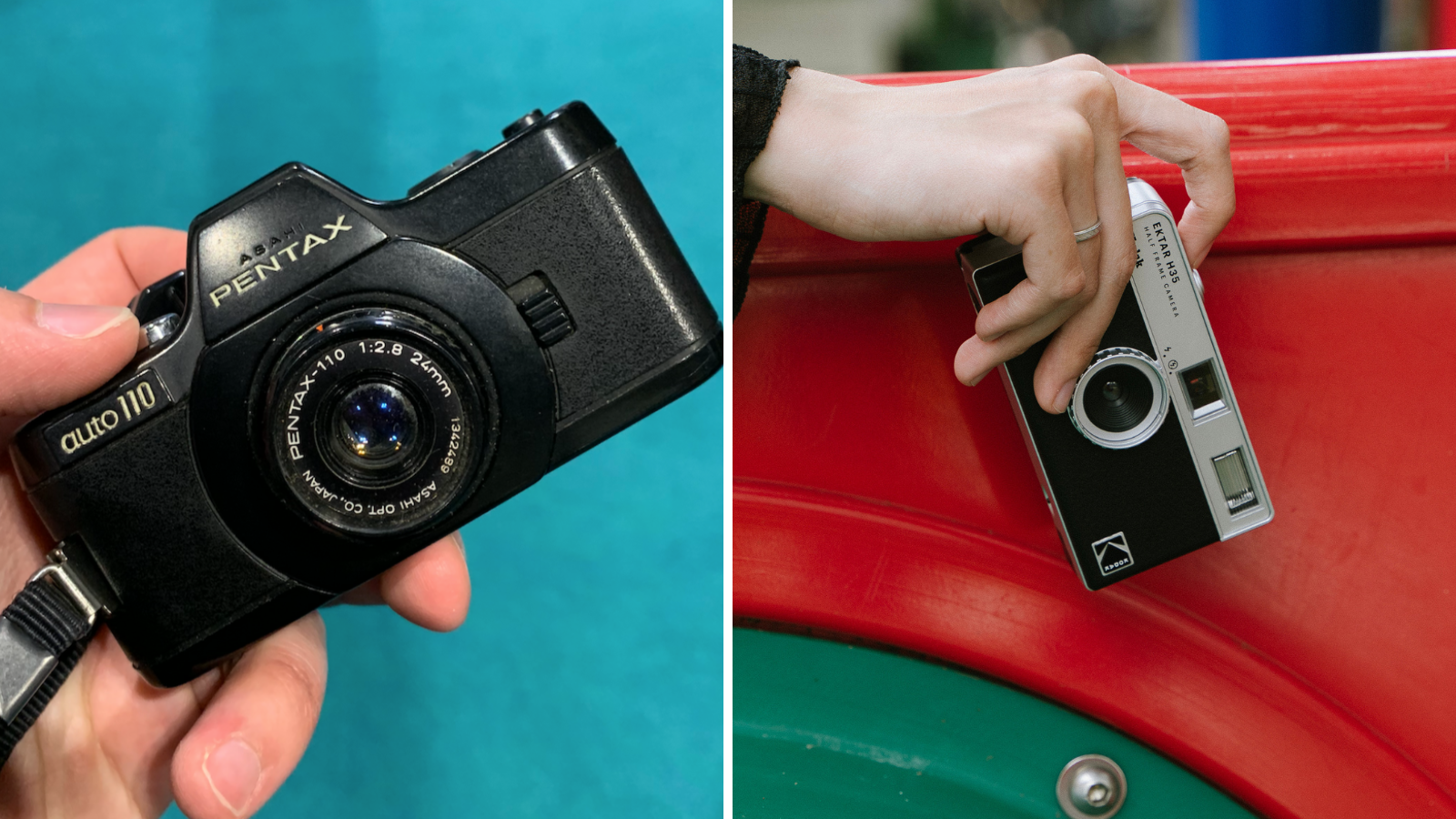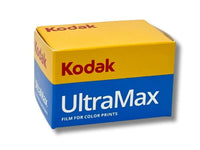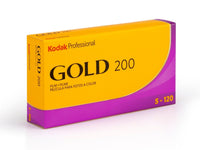Recent posts

Kodak Ultramax vs Kodak Gold: Which Film is Better?
By Karen Freer
Wondering which film is the better choice for you – Kodak Ultramax or Gold? As two of the most popular colour 35mm films in the world, and cheaper than the premium Kodak emulsions of Portra or Ektar, many people ask us which they should shoot. This post takes a look at each film's features, benefits, and shortcomings so that you can make an informed decision for your creative film photography.
What is the difference between Kodak Gold and Ultramax
Kodak Ultramax and Kodak Gold are both film stocks produced by Kodak for still photography. The first - and most obvious - difference between the two is their light sensitivity, as measured by ISO, sometimes called film speed. Kodak Ultramax has an ISO of 400, while Kodak Gold has an ISO of 200. (You can learn more about the this concept in our Beginner's Guide to Film Photography).
This means that Kodak Gold has lower light sensitivity and is better suited for well-lit situations, while Kodak Ultramax is better for lower light conditions. Additionally, Ultramax is known for its fine grain, high sharpness and vibrant colours, while Gold is known for its natural colour reproduction and good skin tones.
This makes Kodak Gold a popular choice for portrait and landscape photography, while Kodak Ultramax is popular for outdoor and snapshot photography.

(c) Karen Freer | Kodak Gold 35mm | Minolta Dynax 7 | Dev & Scan WonderLab
 (c) Alexis Gilbert | Kodak Ultramax
(c) Alexis Gilbert | Kodak Ultramax
Is Kodak Ultramax Good?
Simply put: yes 😅 It has over 300 5* ratings on our site at the time of writing, with hundreds of excellent customer photos and reviews. People say...

Aside from those customer reviews, let's take a quick look at the pros and cons that we've seen across hundreds of rolls of Ultramax!
Kodak Ultramax Pros:
- High ISO speed of 400, making it suitable for low light photography.
- Fine grain structure, leading to high sharpness and detail in images.
- Vibrant and punchy colours, making it a popular choice for outdoor and snapshot photography.
Kodak Ultramax Cons:
- May produce high levels of contrast, making it unsuitable for high-key or low-key lighting situations.
- May not produce the most accurate skin tones compared to other film stocks.
- May require more careful metering and exposure techniques to produce optimal results.
Is Kodak Gold Good?
Also yes! At least according to our customers who have given the film over 400 independent 5* reviews at the time of writing.

And again we'll summarise the most common comments for you:
Kodak Gold Pros:
- Low ISO speed of 200, making it suitable for well-lit situations.
- Natural color reproduction, making it a popular choice for portrait and landscape photography.
- Good skin tone reproduction, making it a popular choice for portrait photography.
Kodak Gold Cons:
- Not suitable for low light conditions due to its low ISO speed.
- May produce lower levels of saturation compared to other film stocks.
- May require precise exposure control to avoid underexposure or overexposure.
The Technical Bit
Aside from the customer reviews - and our opinion from seeing each of the films in our lab - there is some measurable data on the films that we can use to analyse Gold vs UltraMax.
But first some background so we understand what we're looking at: spectral sensitivity curves are graphs that represent the sensitivity of a particular film stock to different wavelengths of light. These curves are specific to each film stock and can be used to understand how the film will respond to different colours of light.
The spectral sensitivity curve will typically show the film's maximum sensitivity to light in the green region of the spectrum, with decreasing sensitivity to red and blue light. This is because the human eye is most sensitive to green light, and the spectral sensitivity of film stocks is often designed to match the human visual system.
Using these curves, photographers can make decisions about the type of film they want to use for a particular shot based on the lighting conditions. For example, if the lighting is primarily blue or red, a film stock with increased sensitivity to that colour might be a better choice.
In addition to providing information about colour sensitivity, spectral sensitivity curves can also be used to determine the film's sensitivity to different light sources, such as tungsten or fluorescent lighting. This information is useful for colour correction and can help photographers achieve the desired look for their images.
Got it? Great! Now that we understand the background, let's look at the data for Gold and Ultramax

You can see straight away that Ultramax is indeed more sensitive to light, across the spectrum - which corresponds to it's higher ISO. And you can also see that the shape of the yellow curve is slightly more uniform across its peak.
But there are also lots of similarities - the broad shape of the curves, the wavelengths where each of them peak - these indicate that the look you'll get from your images will be pretty alike in comparable lighting.
For even more technical information on these films, you can download data sheets from Kodak Alaris.
Which Is Best For You?
Choosing between Kodak Gold and Ultramax depends on the type of photography you will be doing and the lighting conditions you will be working in. We have a full article on 'How to shoot Kodak Ultramax' but when comparing with Gold here are a few factors to consider:
Lighting Conditions: If you will be shooting in low light conditions, you should choose Kodak Ultramax as it has an ISO speed of 400. If you will be shooting in well-lit situations, Kodak Gold with its ISO speed of 200 is a good choice.
Type of Photography: If you will be shooting portraits, Kodak Gold is a good choice due to its natural color reproduction and good skin tones. If you will be shooting outdoor or snapshot photography, Kodak Ultramax with its vibrant and punchy colors is a good choice.
Personal Style: Consider the look you want to achieve in your photographs. If you prefer images with high contrast and vivid colors, Kodak Ultramax may be the better choice for you. If you prefer natural color reproduction and good skin tones, Kodak Gold may be the better choice.
Budget: local variations will apply - and the Kodak film shortage has made comparisons difficult around the world - but you would expect Ultramax to cost between 10-25% more per roll than Gold.
Ultimately, the best way to determine which film stock is best for you is to try both and see which one you prefer. Experimentation is a crucial part of the film photography process and can help you discover your personal style and preferences.
Kodak Gold Bonus!
Kodak Gold is available in 120 film so you now have the option to shoot this amazingly popular emulsion in either (or both) 35mm or 120! Ultramax is currently only available as a 35mm film.
 (c) Karen Freer | Kodak Gold 120 | Bronica SQ-A
(c) Karen Freer | Kodak Gold 120 | Bronica SQ-A
Conclusion: Kodak Ultramax vs Gold: Which Film is Better?
Ultimately the decision of whether you shoot Ultramax or Gold will come down to personal preference. The headline difference in light sensitivity and price - Ultramax is both more light sensitive and more expensive - is often enough to drive the decision. And the good news is that both films have legions of fans around the world! So we honestly don’t feel like there can be a bad decision.
Try both - experiment - and have fun shooting!
If you had fun reading this, then head over to our article about Kodak Portra films, 'Unveiling the Perfect Portra: A Comprehensive Comparison of Portra Film Variants'.
And if you'd like to see a similar comparison between black and white films then head over to Kodak Tri-X vs Ilford HP5
Ready to dive in?
Keep Reading
View all
Experimenting with the Newest Addition: Ferrania P33 Film Review

Half-Frame vs. 110 Film: Compact Convenience

Analogue Appeal: Why Do People (Still) Shoot Film?
Subscribe to our newsletter 💌
Sign up for our newsletter to stay up to date on film photography news, sales and events:
Free Tracked Shipping
On all UK orders over £50
Passion For Film
An unbeatable range and an on-site lab
Our Customers Trust Us
Thousands of independent 5* reviews
All Deliveries are Carbon Neutral
Independently audited and verified by Planet
- Opens in a new window.






